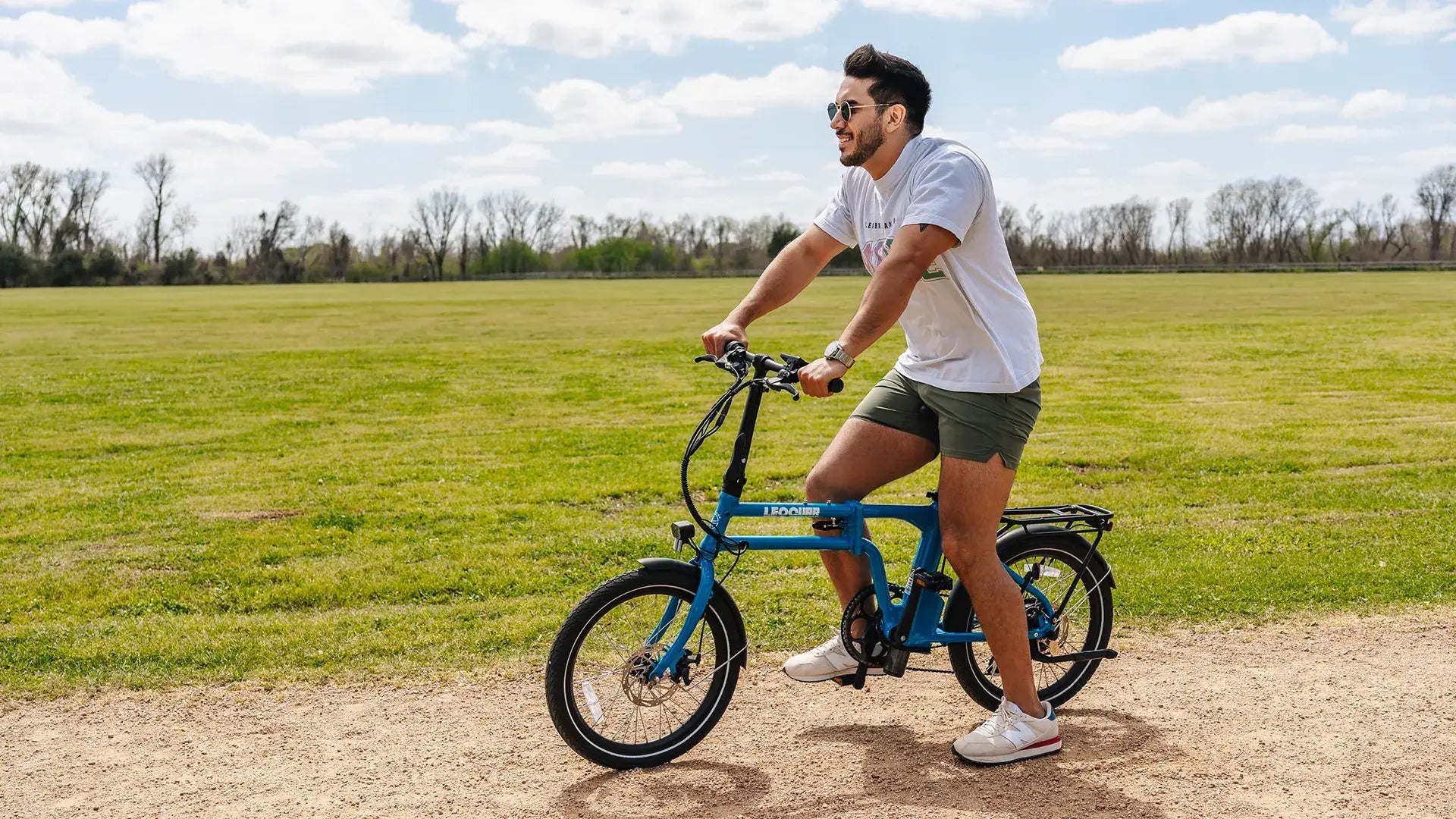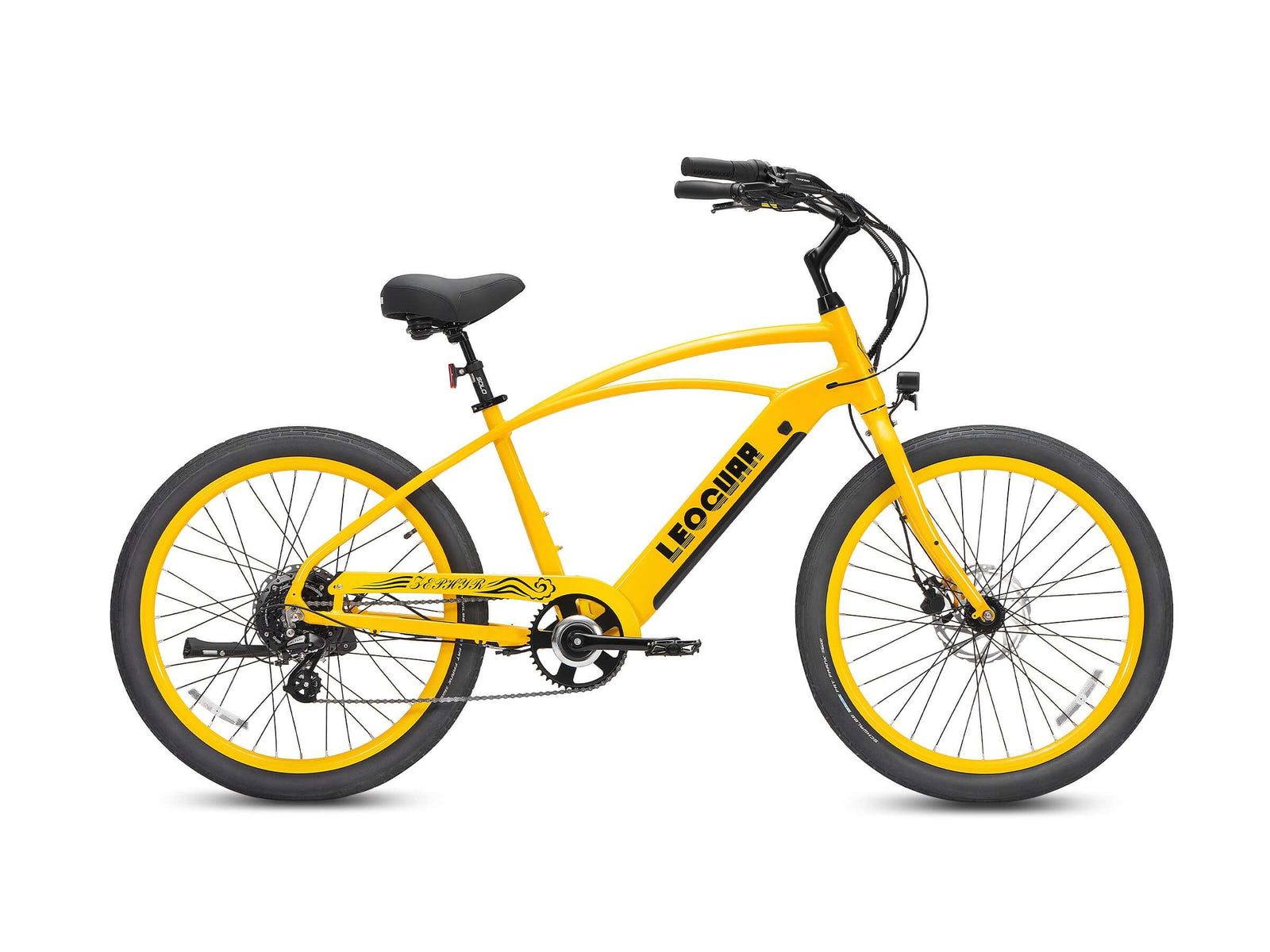
Why Your E-Bike Isn’t Reaching Its Top Speed—and How to Fix It: The Ultimate Guide
Introduction
E-bike fans often feel let down by low speeds. They invest in quality parts but still ask, “Why isn’t my e-bike reaching its top speed?” Many riders wonder how fast can an electric bike go under ideal conditions while they seek more speed. This article looks at common speed limits and gives simple tips to fix them. You will find clear advice on battery care, motor settings, and basic maintenance. We use the keyword “Why Your E-Bike Isn’t Reaching Its Top Speed—and How to Fix It” to keep the focus sharp. Our guide explains easy fixes that boost power and keep safety in mind. We share practical steps drawn from years of real riding. Let us now look at the basics that affect e-bike speed and show you how to get the best performance.
Understanding E-Bike Speed Fundamentals
The Components that Determine Speed
E-bike speed depends on several parts. It uses a motor that ranges from 250 to 750 watts and a battery that keeps things moving. The battery, controller, gear ratios, and shape of the bike all play a role in how fast it goes. They work together to send power to the motor, and a small lag in one part can slow the whole system. Tests show that even a little boost in motor output or battery strength can change the ride.
How Speed Limits and Regulations Affect Performance
Local laws set limits for motor help and speed. In the US and EU, e-bikes are divided into three groups. Below is a structured overview of the legal speed limits per class:
| E-Bike Class | Maximum Assisted Speed (US) | Maximum Assisted Speed (EU) |
| Class 1 (Pedal-Assist Only) | 20 mph | 25 km/h |
| Class 2 (Throttle Included) | 20 mph | 25 km/h |
| Class 3 (Speed Pedelec) | 28 mph | 45 km/h |
These rules keep rides safe while letting the bike work well. Even when the hardware can go faster, the law stops it from doing so.
How Fast Can an Electric Bike Go?
The question "how fast can an electric bike go" has two parts: its potential and its limits. High-end models might reach 50 mph in tests. For most riders, legal rules hold the speed down. For further reading on realistic performance and engineering details, check out How Fast Do Electric Bikes Go?. Knowing these limits helps set true expectations and keeps you safe.
Common Reasons Your E-Bike Isn’t Hitting Its Top Speed
Battery Related Factors
Batteries are very important for a good ride. They give power to the motor and wear out over time. A drop in battery voltage can stop your motor from getting enough power. Many riders see a warning sign when battery cells get old. Poor charging and loose battery wires can also lower the top speed.
Motor & Controller Limitations
Many bikes come with built-in speed limiters. They keep the bike safe and follow the law. If the controller is not tuned right or a gear kit brings new issues, the bike loses speed. Tinkering with settings might help but must be done with care. Even small missteps in the setup can block the power.
Mechanical and Environmental Factors
Other issues can also slow down your e-bike. Low tire pressure or misaligned gears can add extra drag. High winds or steep hills can make the bike slower. Badly adjusted brakes and extra dirt also add resistance. Regular checks and small fixes help the bike run at its best.
Troubleshooting and Fixes: How to Boost Your E-Bike’s Speed
Battery Optimization
Fixing the battery is a strong step to get more speed. Start by checking for signs of battery wear and make sure the connectors are tight. Follow this checklist for battery health:
• Check the voltage against the maker’s numbers.
• Measure the battery’s resistance with the right tool.
• Use the proper settings on the charger.
• Look for rust or corrosion on the connectors.
• Make sure storage conditions are cool and dry.
Doing these steps often keeps power steady. Test your battery every few months or before long trips. If the battery still weakens, think about replacing it to boost top speed.
Adjusting Motor and Controller Settings
Tweaking the motor and controller can raise the bike’s speed. Many controllers let you change throttle feel, power output, and even speed limits. When you make adjustments, keep all changes legal and safe. Use approved tools or ask a skilled technician to help. Small changes after tests can improve speed without strain. Write down each adjustment and try them in a safe area first.
Mechanical Maintenance and Upgrades
Regular care of the bike stops speed problems. Check your tire pressure every week and adjust to the maker’s PSI. Look at the gears and replace worn parts like chains or sprockets. A close look can catch issues like misaligned wheels. Follow these steps to check your bike:
-
Check tires for proper air and wear.
-
Look at the chain and oil it.
-
Tighten any loose bolts.
-
Clean the brakes and fix pad positions.
-
Check hub bearings and moving parts.
Following these steps helps your bike run well and last long. These tasks improve speed and extend the bike’s life.
Legal Considerations and Safety Implications
Understanding Local Regulations
Changing your e-bike to make it faster must follow local laws. Each area has rules for e-bike types and speed limits. For example, in the US, Class 1 and Class 2 e-bikes can go 20 mph, and Class 3 bikes up to 28 mph. Breaking these rules might lead to fines or unsafe rides. Always check local rules and use trusted guides before you adjust anything.
A useful reference is the NYC eBike Regulations available here. This link gives clear limits and safety tips. Always choose changes that follow the law to keep yourself safe.
Safety First
More speed can bring more risk. Faster bikes need better brakes, strong tires, and good suspension. Upgraded speeds call for helmets, gloves, and extra lights. Even with fixes, do not risk the bike’s strength or safety gear. Ask experts and test changes carefully. Enjoy the ride but always ride safely.
Unique Insights & Case Studies
In-Depth Analysis of a Common Issue
A city rider had trouble with slow speeds after months of riding. The rider's battery lost voltage and showed signs of wear. A new battery and controller check brought back the top speed. Data showed a 15% rise in acceleration after the fixes. This case shows that regular battery checks matter.
Expert Tips from Industry Veterans
Experts advise regular system checks for best performance. They say checking sensors on both the controller and motor is key. It is best to inspect the bike every 500 miles to keep it sharp. They also suggest tracking weather changes since humidity and temperature affect performance. Their advice comes from many real tests. Veterans say that writing down your checks helps spot issues early. This mix of case studies and tips makes the fixes more reliable.
Preventive Maintenance and Long-Term Performance
Routine Checks and Maintenance Routines
Taking care of your e-bike stops speed issues from growing. A simple checklist can save you money and time. Here is a suggested timeline:
• Weekly: Check tire pressure, clean the chain, and inspect brake pads.
• Monthly: Test battery power, look at connectors, and adjust controller settings.
• Every 500 Miles: Do a full check of the gears and wheel alignment.
• Annually: Have a pro look at the motor and controller.
Following these steps helps you catch issues early. Preventive care keeps the bike strong and safe.
Conclusion
Many things can stop your e-bike from reaching full speed. Some common issues are battery wear, motor settings, and mechanical problems. Troubleshooting and regular checks are the best fixes. Safety and legal rules must always come first. We hope this guide helps you boost your ride without risk. Share your own tips and read expert advice. By following this guide, you can enjoy better speed and a safer ride.
FAQ
1. Why is my e-bike running slower than its advertised top speed?
- Common causes include battery degradation, controller limitations, tire pressure issues, and mechanical wear.
2. What is the maximum legal speed for an e-bike in 2025?
- Class 1 and 2 e-bikes: 20 mph
- Class 3 e-bikes: 28 mph
- Speeds vary by region and local regulations
3. How often should I maintain my e-bike to ensure optimal speed performance?
- Weekly basic checks
- Monthly battery tests
- Full maintenance every 500 miles
- Annual professional inspection
4. Can I modify my e-bike controller to increase speed?
- While possible, modifications must comply with local regulations
- Professional assistance is recommended
- Safety considerations are paramount
5. How does battery health affect my e-bike's top speed?
- Battery voltage directly impacts motor performance
- Aging batteries reduce power output
- Regular charging and proper storage extend battery life
- Common causes include battery degradation, controller limitations, tire pressure issues, and mechanical wear.
2. What is the maximum legal speed for an e-bike in 2025?
- Class 1 and 2 e-bikes: 20 mph
- Class 3 e-bikes: 28 mph
- Speeds vary by region and local regulations
3. How often should I maintain my e-bike to ensure optimal speed performance?
- Weekly basic checks
- Monthly battery tests
- Full maintenance every 500 miles
- Annual professional inspection
4. Can I modify my e-bike controller to increase speed?
- While possible, modifications must comply with local regulations
- Professional assistance is recommended
- Safety considerations are paramount
5. How does battery health affect my e-bike's top speed?
- Battery voltage directly impacts motor performance
- Aging batteries reduce power output
- Regular charging and proper storage extend battery life










































Leave a comment